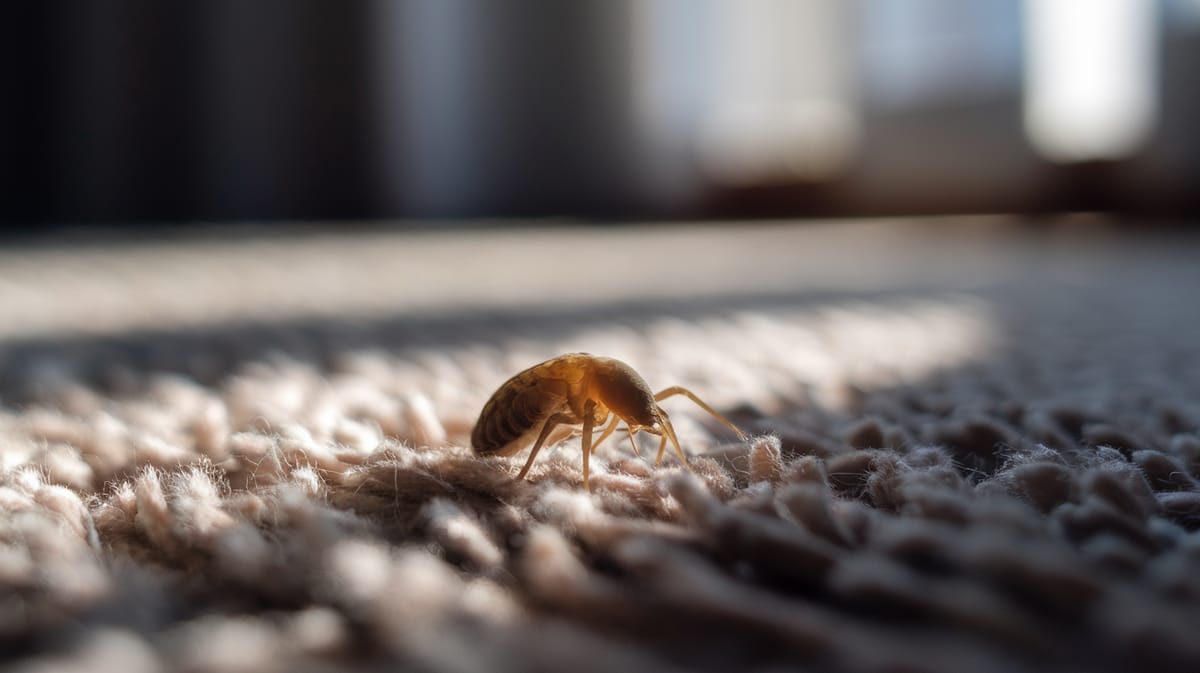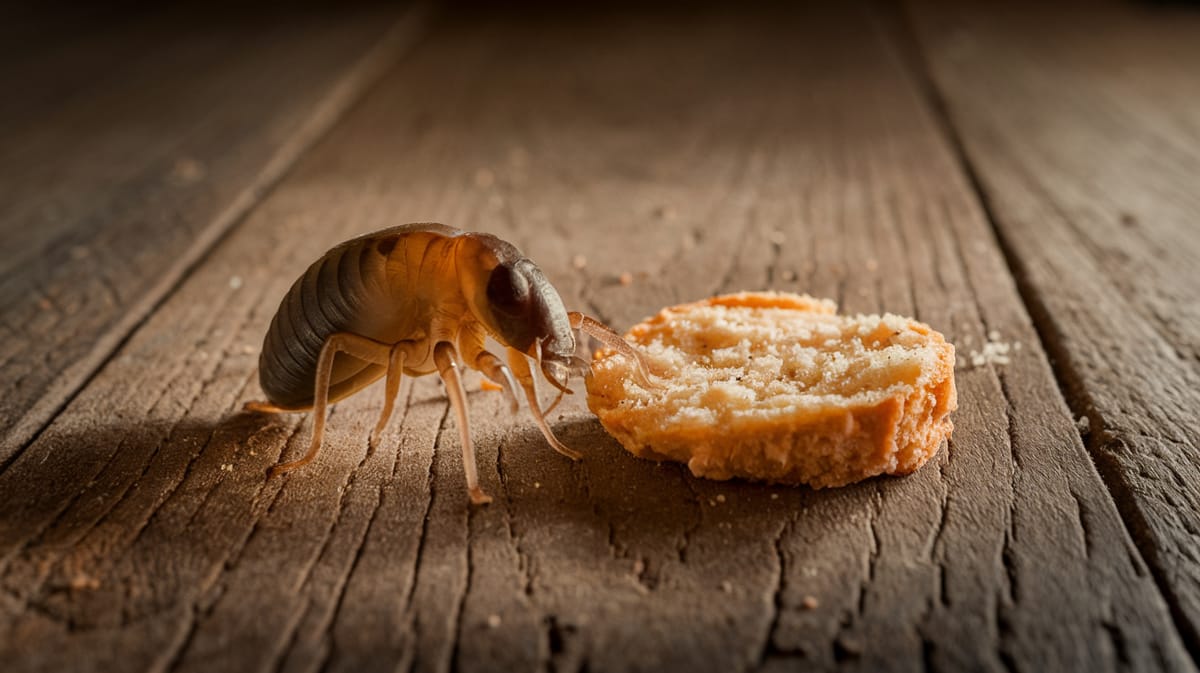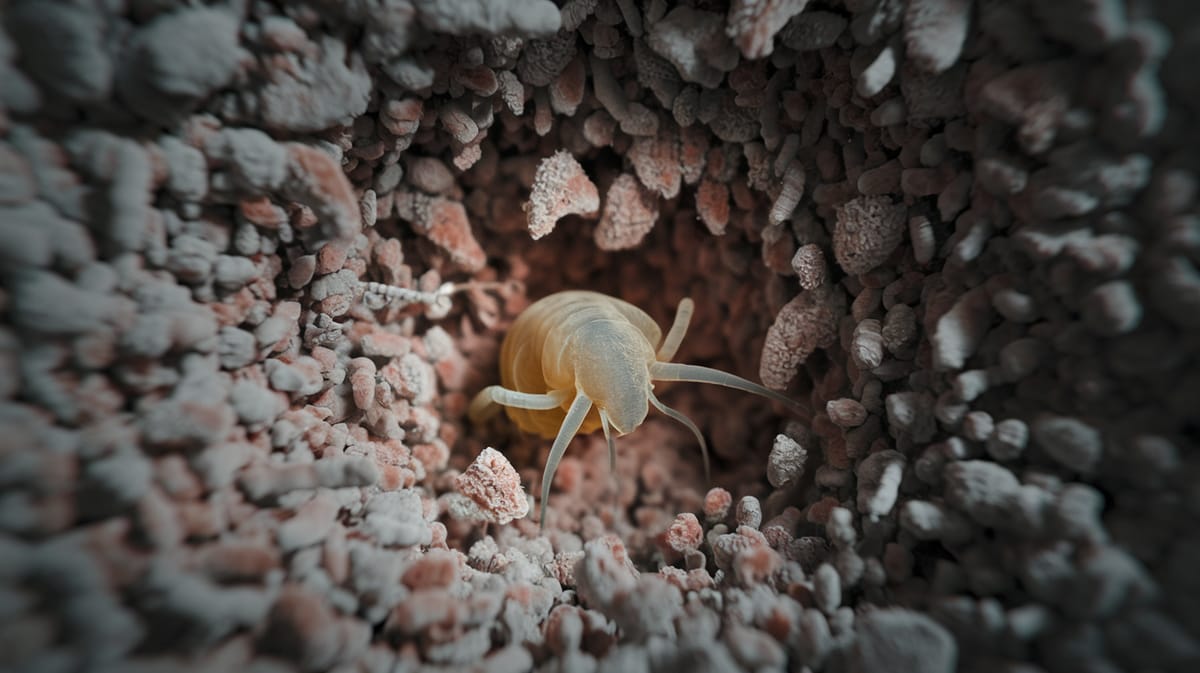House Dust Mite
Small but mighty, the House Dust Mite thrives in our homes, feeding on shed skin cells and playing a crucial role in the ecosystem by decomposing organic matter. Its microscopic size and resilience make it a fascinating subject of study.

Key Insights at a Glance
Did You Know?
Taxonomy & Classification
House dust mites are microscopic arachnids, thriving in human habitats by feeding on shed skin cells, demonstrating exceptional adaptation to indoor environments. Let's understand the evolutionary journey and classification of these remarkable decomposers.
Global Distribution
House dust mites are prevalent worldwide, particularly in humid regions, adapting to diverse climates and contributing to indoor ecosystems.
Ancient Adaptations
Originating over 23 million years ago, dust mites evolved sophisticated digestive enzymes allowing them to thrive in human environments.
Lifecycle and Growth
A remarkable journey of transformation from Egg to Adult.
Egg
Laid in clusters, eggs develop under protective conditions, setting the stage for the next transformation in a controlled environment.
Larva
Emerging larvae have six legs and feed on organic debris, preparing for the next stage of growth and development.
Nymph
Transitioning through two nymphal stages, they develop additional legs and body features essential for adulthood.
Adult
Adults, equipped with eight legs, focus on reproduction and maintaining population levels in their preferred environment.
Dietary Habits
A microscopic scavenger with a unique diet, this insect primarily consumes organic material, thriving in dusty environments and household debris.
| DIET TYPE | DESCRIPTION |
|---|---|
| Primary Diet | Primarily feeds on flakes of human skin and dander, which are abundant in household dust. |
| Secondary Diet | Consumes fungi, pollen, and pet dander, supplementing its diet where human skin is less available. |
| Occasional | Occasionally ingests food crumbs or microscopic fibers, exploiting available resources in varied home environments. |

Behaviour and Adaptations
Discover the extraordinary adaptations that enable the House Dust Mite to thrive in its unique environment.
Allergy Catalyst
Produces allergenic proteins affecting human health, aiding in chemical defense.
Moisture Absorption
Efficiently absorbs moisture from the air to survive in dry conditions.
Micro-Habitat Specialist
Thrives in human habitats, especially bedding and upholstery, due to their warmth and humidity.
Ecosystem Impact
House Dust Mites play a crucial role in decomposing organic matter and maintaining ecological balance.
Organic Matter Decomposition
Breaks down shed human and animal skin, contributing to nutrient recycling.
Microbial Community Support
Aids in maintaining microbial diversity by enhancing habitat conditions.
Allergen Source Control
Regulates allergen levels, influencing immune responses in mammals.
Conservation Challenges
Understanding and addressing the major threats to House Dust Mite populations.
Chemical Exposure
Household cleaners and pesticides reduce mite populations by contaminating their habitats.
Indoor Air Pollution
Poor air quality affects mite survival and reproduction.
Climate Change
Temperature and humidity shifts disrupt mite ecosystems and life cycles.
Frequently Asked Questions
How long do House Dust Mite live?
House Dust Mites typically live for about one to two months. Female mites can lay up to 100 eggs in their lifetime, ensuring a rapid population growth in favorable conditions. Their life cycle includes stages of egg, larva, nymph, and adult.
What do House Dust Mite eat?
House Dust Mites feed primarily on flakes of human skin that people shed daily. They thrive in warm, humid environments and are often found in bedding, carpets, and upholstered furniture where they can easily access their food source.
Are House Dust Mite poisonous?
House Dust Mites are not poisonous. However, their feces and body fragments can trigger allergic reactions and asthma in sensitive individuals. These reactions are due to proteins found in the mites' waste, which can become airborne and inhaled.
Are House Dust Mite endangered?
House Dust Mites are not endangered. They are common in homes worldwide, particularly in humid and temperate environments. Their ability to thrive in human habitats ensures their continued presence and population stability.
What do House Dust Mite symbolize?
House Dust Mites don't have any symbolic meaning in cultures or literature. They are primarily known for their role in causing allergies and are often associated with cleanliness or indoor environmental health.
Do House Dust Mite bite?
House Dust Mites do not bite humans. They are scavengers that feed on dead skin cells. Any skin irritation is usually due to allergic reactions to mite allergens, not bites.
What color are House Dust Mite?
House Dust Mites are typically pale or translucent. They are so small, often just 0.2 to 0.3 millimeters long, that they are usually invisible to the naked eye. A microscope is needed to see them clearly.
Does a House Dust Mite have wings?
House Dust Mites do not have wings. They are wingless arachnids, similar to spiders and ticks, and move by crawling. Their small size allows them to easily inhabit fabric and dust particles.
What does a House Dust Mite look like?
House Dust Mites are microscopic, measuring about 0.2 to 0.3 millimeters in length. They have a round body with eight legs and lack the segmentation seen in some other arthropods. Their translucent bodies are covered with fine hairs.
Is a House Dust Mite an insect?
House Dust Mites are not insects; they are arachnids, belonging to the same class as spiders and ticks. They have eight legs, whereas insects have six legs and three body segments. Dust mites have a simple body structure without distinct head or body segments.
Related Insects
Discover insects with similar characteristics to House Dust Mite - including shared habitats, diets, and taxonomic classifications
Share this profile
Help others discover House Dust Mite
